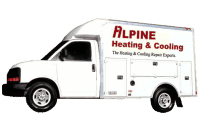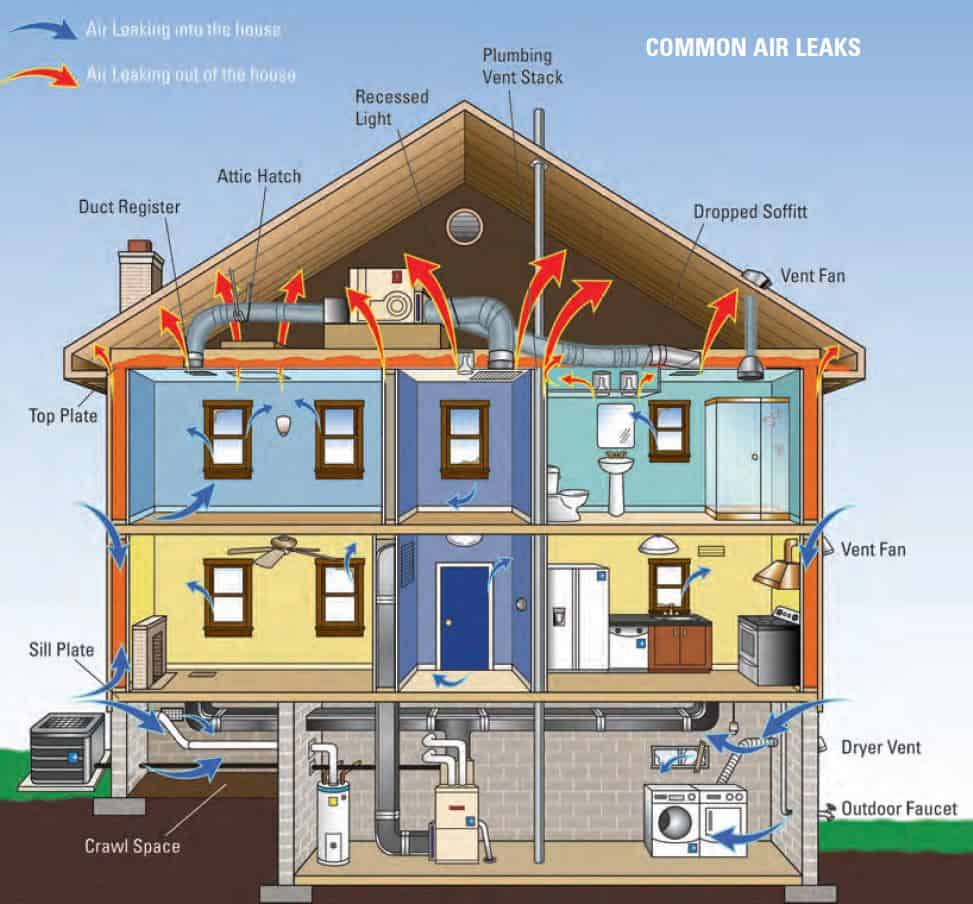
Go Electric with PSE. Active PSE natural gas customers can receive a FREE home electrification assessment that includes: An energy-saving home improvement plan with guidance on how to go electric $50 gift card for participating and up to $50 for referring others ($25 per referral; up to 2).
What are the benefits?
A home electrification assessment can help you plan for energy-saving home improvements and create a roadmap for switching to an electric lifestyle (home heating, electric vehicle charging, solar, and more). The post-assessment report will also include suggested resources such as utility rebates, and incentives from local, state and federal agencies. While in the comfort of your own home, you and your Electrification Coach will complete the home electrification assessment in approximately 60 minutes.
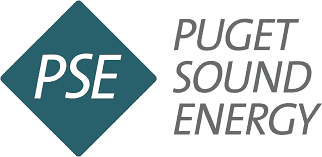

As the vibrant colors of summer begin to fade, it’s time to transition your home to embrace the coziness and warmth of fall. By taking some proactive steps now, you can ensure your space is not only comfortable but also ready to face the colder months ahead. Make your home maintenance fall checklist, and contact us to help with servicing your heating system!
Inspect and Clean Gutters
Fallen leaves and debris can quickly clog up your gutters, potentially leading to water damage and leaks. Make sure to clean them out and ensure they’re in good condition before the rainy season arrives.
Check for Drafts
Inspect windows and doors for any gaps or cracks that may allow cold air to seep in. Seal these areas with weatherstripping or caulk to keep your home warm and energy-efficient.
Service Your Heating System
Before the temperatures drop significantly, have a professional service your heating system. This ensures it’s running efficiently and reduces the risk of any unexpected breakdowns during the colder months.
Clean and Inspect Your Fireplace or Heating Appliance
If you have a fireplace, wood stove, or any other heating appliance, ensure it’s clean and in good working order. Have the chimney inspected and cleaned to prevent potential fire hazards.
Test Smoke and Carbon Monoxide Detectors
Fall is a great time to check the batteries in your smoke and carbon monoxide detectors. Replace them if needed and ensure these life-saving devices are in working condition.
Switch to Heavy-Duty Bedding
Swap out lightweight summer bedding for warmer, cozier options. Consider adding extra blankets or a duvet to your bed for extra warmth during chilly nights.
Insulate Pipes
Prevent frozen pipes by insulating them in areas that are susceptible to cold, such as basements, attics, and crawl spaces. This simple step can save you from a major headache later on.
Clean and Store Outdoor Furniture
Protect your outdoor furniture from the elements by cleaning it thoroughly and storing it in a sheltered area, like a garage or shed. If you don’t have space, invest in high-quality covers.
Fertilize Your Lawn and Garden
Autumn is an important time to nourish your lawn and garden for healthy growth in the spring. Apply a balanced fertilizer to promote root development and prepare plants for the winter months.
Decorate for Fall
Embrace the spirit of the season by adding fall-themed decor to your home. Consider incorporating warm colors, cozy textiles, and seasonal accents like pumpkins, gourds, and wreaths.
By following this fall home maintenance checklist, you’ll create a cozy and inviting atmosphere in your home and ensure it’s well-prepared to face the challenges that fall may bring. Taking these proactive steps now will help you enjoy the beauty of autumn without any unexpected surprises. Happy fall decorating!

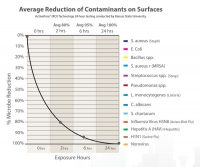
While our attention is focused on the spread of Coronavirus, and we are thinking about the necessary precautions that are needed to reduce our chances of coming in contact with this virus, HVAC professionals know that Coronavirus is not the only disease, germ, virus, or pollutant we need to combat in our homes. We also need to consider the other viruses and germs that are spread through a central HVAC system. People spend about 90% of their lives indoors, and pollutant levels can be as high as 100 times the levels encountered  outside. The Environmental Protection Agency (EPA) ranks indoor air pollution among the top four environmental hazards in America. One-way people can be proactive and protect themselves from getting sick in general is by being educated on Indoor Air Quality (IAQ).
outside. The Environmental Protection Agency (EPA) ranks indoor air pollution among the top four environmental hazards in America. One-way people can be proactive and protect themselves from getting sick in general is by being educated on Indoor Air Quality (IAQ).
There are four particular groups (although all people could benefit) that need the best possible air quality in the home:
- Infants to 16-years-old
- Adults, age 60 plus
- No age restriction – immune-compromised individuals, pregnant women, and persons with chronic respiratory disorders, and those recovering from surgical procedures or illness
- Pet owners with domestic animals – dogs, cats, and birds
Scientist believes the principal transmission mode of the Coronavirus is by respiratory droplets, which may travel several  feet from someone who is coughing or sneezing. Covering your mouth when you cough or sneeze is the first step to control the spread. However, residual contaminants can travel through your HVAC system, where all air in the home is circulated and can contribute to the spread of an airborne virus. The Coronavirus has the same traits as other viruses such as the common cold, the flu, and a sore throat, by how it is spread from person-to-person.
feet from someone who is coughing or sneezing. Covering your mouth when you cough or sneeze is the first step to control the spread. However, residual contaminants can travel through your HVAC system, where all air in the home is circulated and can contribute to the spread of an airborne virus. The Coronavirus has the same traits as other viruses such as the common cold, the flu, and a sore throat, by how it is spread from person-to-person.
Source control is always the first step when dealing with IAQ concerns such as mold, dust, odor, and even viruses. There are many remedies when it comes to managing IAQ in a home. Some products range from a higher Minimum Efficiency Reporting Value (MERV) rated filter, electronic air cleaners, and ultra-violet sterilization systems. The HVAC system and duct system can contribute to spreading unwanted pathogens in the air, not because your system came contaminated from the factory, but because the air in your home became contaminated.
Tiny pathogens spread in the air can be fungi, bacteria, or viruses. The difference between a virus and bacteria is viruses are much smaller than bacteria, and viruses cannot survive without a host. According to the Mayo Clinic, fewer than 1% of bacteria cause disease in people.
In addition to spreading viruses through an HVAC system, another nemesis is mold, a biological growth. Mold is, in the  simplest terms, part of the “dust to dust” program. Everything living will die, it will return to the food chain, whether it’s a mighty oak tree, your favorite leather shoes (once upon a time, a cow), or that forgotten orange in the back of the refrigerator.
simplest terms, part of the “dust to dust” program. Everything living will die, it will return to the food chain, whether it’s a mighty oak tree, your favorite leather shoes (once upon a time, a cow), or that forgotten orange in the back of the refrigerator.
Your HVAC system can provide biological growth the perfect opportunity to form and grow. There are three things needed to support biological growth. Food is the number one source of supporting biological growth. One example of food sources is skin cells that have flaked off and floated into the HVAC system. The next item to support organic growth is moisture. Once those skin cells made it through the system, they can become attached to the evaporator coil or blower motor. When the coil starts to produce condensation along with the food source, it becomes the perfect recipe for biological growth. The final item to contribute to organic growth is the absence of ultraviolet light. HVAC professionals and homeowners who manage these factors, reduce the risk of biological growth.
To set the record straight:
- Mold and viruses are not a factory option
- AC units do not create mold or viruses
- If you have mold or viruses, it is your mold and viruses
- An ultra-violet system will not keep your home mold or virus-free
When an ultra-violet system is used correctly and installed to the manufacture’s guidelines, it can prove to be a useful tool. Ultra-violet exists in natural sunlight (it’s why we wear sunscreen, and mold grows under a rock), it disassembles the DNA of organics. It reduces them to nitrogen and oxygen. Ultra-violet is most effective as surface irradiation (with a limited “kill zone”) and is used in many applications. It is used to sterilize medical instruments, clean reclaimed water in treatment plants, saltwater aquariums, and is used in food processing.
Contractors should educate customers on the value of IAQ and provide solutions and options to help the homeowner make educated decisions. An HVAC system should be inspected at a minimum, twice a year. Visit The National Air Duct Cleaners Association for recommendations on HVAC system cleaning. Be sure to ask your HVAC technician on products that can help you breath cleaner, fresher, healthier air.
In times like these, when emotions run high, and everyone is concerned about the unknown, HVAC professionals need to shine as a beacon of truth and good faith. Quality maintenance, good hygiene, and proven best practices such as; improved indoor air quality, source control for contamination, and keeping a clean house are the keys to successfully navigating current health issues.
By: Matt Akins, ACCA Manager of HVACR Education
ACCA is a non-profit association serving more than 60,000 professionals and 4,000 businesses in the indoor environment and energy services community. Our member firms are the nation’s most professional contracting businesses, serving residential and commercial customers in every state. With roots stretching back a century, ACCA was incorporated in its present form nearly 50 years ago. Today, ACCA sets the standards for quality comfort systems, provides leading-edge education for contractors and their employees, and fights for the interests of professional contractors throughout the nation. Learn more about ACCA here.
Reference Sources
https://www.epa.gov/report-environment/indoor-air-quality
https://www.cdc.gov/mmwr/volumes/69/wr/mm6908e1.htm

Alpine Heating & Cooling offers Air Scrubber Plus, an air and surface purification system for your home which is university proven to remove 99.9% of mold, cigarette smoke and disease-causing bacteria in your home. Air Scrubber Plus utilizes the power of UV light to sterilize the air in your home, eliminating many airborne contaminates making your home safer to live in. An earlier version of this technology was originally developed in cooperation with NASA to be used on the international space station. We here at Alpine Heating & Cooling run Air Scurbber Plus units in our shop and at our home. Contact us for an estimate for your home or office!
What is ActivePure Technology Air Purification?
Everyone is increasingly concerned about their potential exposure to allergens, mold, VOCs and air pollutants, and for good reason: allergies affect more and more people, and respiratory issues like asthma continue to be on the rise.
With ActivePure® Technology, you can go beyond traditional air purification systems by not only eliminating stale odors and reducing dust, but actually eliminating harmful contaminants* in the air and on the surfaces of your home.
ActivePure® is created in the USA, by a leading technology company with over 95 years of history and innovative products that have been recognized by the Smithsonian and trusted by millions of families. ActivePure® is the only air cleaning technology awarded the prestigious Certified Space Technology seal by the Space Foundation. We own worldwide rights to this proprietary ActivePure® Technology and it is the only Certified Space Technology that works to continuously clean and protect air and surfaces 24 hours a day.
ActivePure® is the only Certified Space Technology created in cooperation with NASA to protect the health of the astronauts on board the International Space Station.
ActivePure Technology Benefits – What Can ActivePure Technology Do for You?
- Purifies air, removes VOCs, and significantly reduces dust particles and odors without using ozone
- Reduces exposure to common bacteria and viruses and their effects upon your health and wellness
- Protects against allergy and asthma triggering contaminants and respiratory issues which may lead to health problems
- Effective against MRSA, E. coli and other illness-causing bacteria and viruses
- Reduction in sick days and the number of the common cold and flu outbreaks
- Protection from allergy and asthma triggering contaminants
- Reduction in respiratory issues
- Improved productivity from healthier, cleaner air and surfaces
- Protection from illness-causing bacteria and viruses such as MRSA, E. coli, and C. Diff
- Feel better
- Odor control
- Sleep better
Frequently Asked Questions
Q. I understand ActivePure® Technology is powerful, effectively
destroying bacteria, viruses, and pathogens, but is it safe
enough for air purification for newborn babies and pets?
A. Yes, the Air Scrubber by Aerus with ActivePure® Technology is safe
for everyone including newborn babies and pets.
Q. Could this Technology be dangerous or cause any long-term
side effects?
A. No, ActivePure® Technology is not dangerous. Our products are
specifically engineered to purify indoor living environments.
Long-term side effects of living in cleaner spaces and being
protected from exposure to harmful contaminants should
be beneficial. In fact, our customers have reported many lifechanging
benefits including improved health, productivity, and
well-being.
Q. Is it possible for indoor air to be too pure?
A. No. Based on air leakage within all homes and general daily traffic,
you cannot obtain too pure of an indoor environment.
Q. According to EPA guidelines what is a safe indoor air particle
count?
A. The particle count reading should be less than 1 μg/m³ in order to
meet EPA guidelines, which is virtually impossible to achieve outside
of a clean room. Our ActivePure® Technology will get you close.
Q. I like to open my windows when it is nice outside. What effect
will this have on the air quality in my home?
A. Open windows promote the passage of outside contaminants into
your home, compromising the level of air quality and purification
the Air Scrubber by Aerus works to create and maintain. It is
recommended to turn off the HVAC system while windows are left
open.
Q. How effective is the Air Scrubber by Aerus’ ActivePure®
Technology in larger buildings? My home is quite spacious.
Do I need more than one unit installed in various locations?
A. This unit covers up to 3,000 sq. ft. If you have separate A/C systems
operating throughout your home, each additional system will
require its own unit.
ActivePure Technology – Scientifically Proven to Work
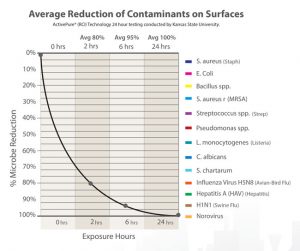

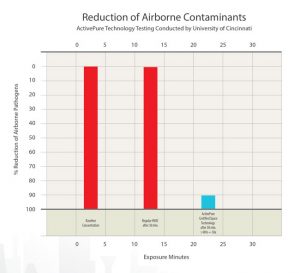
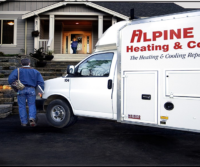
A ductless split system represents a significant investment in comfort, safety, and efficiency. To enjoy the many benefits of ductless technology, it is important to understand the various elements involved in a successful installation. Alpine Heating & Cooling encourages anyone considering an HVAC equipment purchase to explore the cost-effective and environmentally friendly solutions provided by ductless split system advantages.
The Advantages of Ductless Technology
Every year more homeowners in Skagit Valley become acquainted with the versatility of ductless air conditioners and heat pumps. When compared to traditional furnaces and central air conditioning equipment, mini splits offer numerous compelling benefits.
- Versatility: For room additions, garage conversions or areas requiring supplemental heating and cooling, ductless equipment is quiet, efficient and easy to install.
- Reduced Energy Costs: Point-of-use air handlers deliver conditioned air directly into each room without the loss of thermal efficiency associated with an air distribution network. Ductless systems include advanced inverter technology, which offers the highest SEER ratings in the industry.
- Better Comfort: The zoning concept behind ductless design saves energy and also helps improve indoor comfort. The temperature in every room can be tailored to meet the personal requirements of each occupant.
The Importance of Design
In the system design phase, Alpine Heating & Cooling complete calculations to establish the specific load requirements for every room in the building or home. Equipment is selected so that the capacity matches the heaviest theoretical load that could occur during extreme weather.
Many companies that use outdated “rule of thumb” formulas for sizing equipment can compromise comfort, humidity control and degrade system performance.
Why Choose Alpine Heating & Cooling
Regardless of the build quality of the equipment, Alpine Heating & Cooling will have a substantial impact on performance, efficiency, and longevity. Alpine Heating & Cooling has extensive experience and knowledge and provides important services that will help keep HVAC systems running dependably over an extended lifecycle.
Since heating and air conditioning is a highly specialized industry, it is important to choose a company that has a suitable level of knowledge and experience to address the specific requirements of the job.
- Areas of Expertise: Many HVAC companies specialize in a specific industry discipline. This includes new construction, retrofit, commercial HVAC and service. Alpine Heating & Cooling has the skill and expertise to directly meets the requirements for a particular application and will result in a more successful and less expensive outcome.
- The Screening Process: References and referrals are important tools to verify the quality of our work – check out our reviews!
Understanding SEER Ratings
The Seasonal Energy Efficiency Ratio (SEER) is a federal standard designed to provide consumers with an easy way to compare the operating costs for different brands and models of air conditioners. Relative efficiency between two machines can be calculated by dividing the higher SEER rating by the lower SEER rating. For example, replacing a 10 SEER air conditioner installed in the early 2000s with a high-efficiency 16 SEER unit can save up to 60 percent on annual cooling costs, depending on local climate conditions.
Energy Savings Tips
Homeowners can dramatically lower heating and cooling operating costs by changing minor lifestyle habits and considering several relatively inexpensive upgrades.
- Closing the Blinds: Window coverings provide protection against convection and radiant heat. Shades with a k-value rating can reduce the thermal gain from single-pane windows by up to 50 percent.
- Replace Light Bulbs: A conventional light bulb produces 10 percent light and 90 percent heat when it is lit. A compact fluorescent or LED light bulb is far more efficient, especially in climates with extreme summer heat. In fact, over half the total energy savings from a light bulb replacement can be attributed to the reduced summer cooling load.
- Plant Shade Trees: Shade trees have a positive impact on climate change and can help reduce a home’s total air conditioning load when strategically positioned to reduce the effects of south and west sun exposure. The energy savings can be magnified for homes with a significant amount of exterior glass.
- Raise the Thermostat: Raising the thermostat by one degree during summer months can lower energy usage by up to five percent and also reduce equipment-related stress.
- Upgrade Insulation: For older homes with loose perimeters, insulation offers the greatest energy savings per dollar invested. For homes built before the year 2000, upgrading insulation levels to meet current Department of Energy standards can save up to 30 percent on annual cooling costs with an associated payback of less than five years.
Repair or Replace
Even with proper maintenance, a central air conditioner or furnace will eventually need to be replaced. Whether due to age or obsolescence, equipment begins to malfunction and repair costs mount. As performance diminishes, utility costs continually rise as the HVAC unit must work harder and longer to satisfy the indoor load.
While there is no specific timeline for equipment longevity, HVAC systems that are eight years or older should be considered for replacement. Leading-edge ductless systems combine exceptional levels of comfort with the highest available efficiencies.
Alpine Heating & Cooling invites you to learn more about the versatility, efficiency and attractive appearance offered by modern ductless split systems.

Get instant LED discounts on a variety of energy-saving Philips LEDs this fall. This offer is available at the Burlington, Washington Home Depot, from October 5 to November 29, 2019, while supplies last.
Philips LEDs for as low as 99 cents per bulb:
- A-lamp LED 4-pack for $3.96 (was $13.54, SKU: 1004632147)
- Reflector LED 3-pack for $2.97 (was $13.45, SKU: 1004632168)
- Candelabra LED 3-pack for $2.97 (was $10.55, SKU: 1004632158)
- 3-way A-lamp LED for $8.78 (was $11.28, SKU: 1001862035)
There’s an instant discount, rebate, or program for everyone and every home. Start saving today with these LED discounts and swap out your light bulbs!
Light Bulb Recycling
Did you know you can recycle incandescent and CFL bulbs for free in Skagit County? Visit these Skagit Recycling locations for quick and safe disposal of incandescent and CFL bulbs. CFL bulbs can also be recycled for free at Lowe’s in Mount Vernon and Home Depot in Burlington. There are also nearly 300 light bulb recycling collection boxes at select PSE offices, retails locations, city halls, and other locations. If you’re interested, you can host your bulb collection box!
Anacortes
- City of Anacortes
- Rosario Assisted Living
Burlington
- PSE: Skagit Service Center
- DC Health Chiropractic
La Conner
- La Conner Regional Library
Mount Vernon
- Alpine Ridge Retirement Apartments
- North Sound Mental Health
- Park Village 55+ Community
- Preview Properties
- Skagit Community Action Agency
- Skagit County Public Works
- Skagit Public Utility District
- Skagit Valley Food Co-op
Sedro-Wooley
- City of Sedro-Wooley
Bulb Recycling Facts
- Do not put used CFL bulbs in the garbage. CFL bulbs contain a tiny amount of mercury and will harm the environment if they are disposed of in landfills in large numbers.
- Recycled incandescent and CFL bulbs get broken down into their component materials. The glass can be used to manufacture other glass products or as a cement aggregate, while the metal is recycled as scrap. Recovered mercury is purified for reuse in industry or stored in properly permitted facilities.
- If a bulb breaks, the U.S. Environmental Protection Agency (EPA) offers detailed instructions for safe clean-up and disposal. Visit the EPA’s CFL information site for current clean-up instructions.
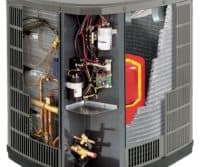
If your HVAC system is old (10 – 15 years) or not working, consider replacing your HVAC equipment with a high-efficiency unit that has earned the ENERGY STAR. It’s a good idea to do some research on options for a new heating or cooling system before your current one breaks, so you can make an informed decision if you need to act quickly.
How much energy you save will vary based on your use and climate, with colder regions saving more with ENERGY STAR heating equipment and hotter regions saving more with ENERGY STAR cooling equipment. Let’s take a look at different types of HVAC equipment to help you with your decision.
Furnaces
Furnaces are the most commonly used residential heating system in the United States. Running most often on gas, but sometimes on oil, propane, or electricity, furnaces deliver their heat through a duct system. Furnaces that have earned the ENERGY STAR have higher AFUE (Annual Fuel Utilization Efficiency) ratings. AFUE is the measure of heating equipment efficiency, represented as a percentage. Most furnaces that can qualify for the ENERGY STAR will be “condensing” furnaces where the transfer of heat is so thorough water or condensate is a byproduct of combustion. This condensing occurs with systems over 90 percent efficient. Another feature of efficient furnaces is a highly efficient blower motor (commonly an ECM, Electronically Commutated Motor, or another type of “advanced main air circulating fan”).
Boilers
A boiler heats your home by burning gas, propane, or oil to heat water or steam that circulates through radiators, baseboards, or radiant floor systems. Boilers do not use a duct system. Boilers that have earned the ENERGY STAR have higher AFUE ratings. Features that improve boiler efficiency include electronic ignition, which eliminates the need to have the pilot light burning all the time, and technologies that extract more heat from the same amount of fuel.
Central Air Conditioners
Most residential central air conditioners are called “split-systems” because they have an outdoor component with a condenser and compressor and an indoor component with an evaporator coil. It’s very important to replace both of these units at the same time. Installing a new outdoor unit without replacing the indoor unit is likely to result in low efficiency, and may lead to premature failure of the system.
ENERGY STAR qualified central air conditioners have higher SEER (Seasonal Energy Efficiency Ratio) and EER (Energy Efficiency Ratio) ratings than today’s standard models. SEER is the most commonly used measurement of efficiency for air conditioners. It measures how efficiently a cooling system will operate over an entire season. EER measures how efficiently a cooling system will operate when the outdoor temperature is at a specific level (95 degrees F).
The central air conditioner also needs a blower motor—which is usually part of the furnace—to blow the cool air through the duct system. The only way to ensure that your new air conditioner performs at its rated efficiency, is to replace your heating system at the same time. It’s especially recommended if your furnace is over 15 years old. If you purchase a new energy-efficient air conditioner but connect it to an older furnace and blower motor, your system will not perform to its rated efficiency.
Heat Pumps
Heat pumps provide both heating and cooling in one integrated system.
Electric Air-Source Heat Pumps (ASHPs). ASHPs, often used in moderate climates, use the difference between outdoor and indoor air temperatures to cool and heat. ENERGY STAR qualified ASHPs have higher SEER and EER ratings than conventional models. They also have a higher Heating and Seasonal Performance Factor (HSPF), which measures the heating efficiency of the heat pump.
Geothermal Heat Pumps (GHPs). GHPs are similar to air source heat pumps, but use the ground instead of outside air to provide heating, cooling, and often water heating. Because they use the earth’s natural heat, they are among the most efficient and comfortable heating and cooling technologies currently available. Although initially expensive, you can achieve significant cost savings on energy bills. GHPs are most often installed in new homes and require a duct system.
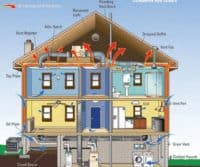
The exterior of your home—the outer walls, ceiling, windows, and floor—is called the “envelope” or “shell.” As a knowledgeable homeowner or with the help of a skilled contractor, you can seal and insulate your home and save up to 20 percent on heating and cooling costs (or up to 10 percent on your total annual energy bill). Sealing and insulating your home envelope will also make your home more comfortable and help your heating and cooling system run more efficiently.
Seal and Insulate to Reduce Hidden Air Leaks
Be sure to look for and seal air leaks before you install insulation because it performs best when air is not moving through or around it. Many air leaks and drafts are easy to find because they are easy to feel—like those around windows and doors. But holes hidden in attics, basements, and crawlspaces are usually more significant problems. Sealing these leaks with caulk, spray foam, or weather stripping will have a significant impact on improving your comfort and reducing utility bills.
Homeowners are often concerned about sealing their house too tightly; however, this is very unlikely in many older homes. A certain amount of fresh air is needed for good indoor air quality, and there are specifications that set the minimum amount of fresh air needed for a house. If you are concerned about how tight your home is, hire Alpine Heating and Cooling, we can use diagnostic tools to measure your home’s actual air leakage. If your home is too tight, a fresh air ventilation system may be recommended.
Adding Insulation
Insulation keeps your home warm in the winter and cool in the summer. There are several common types of insulation—fiberglass (in both batt and blown forms), cellulose, rigid foam board, and spray foam. Reflective insulation (or radiant barrier) is another insulating product that can help save energy in hot, sunny climates. When correctly installed with air sealing, each type of insulation can deliver comfort and lower energy bills during the hottest and coldest times of the year.
Insulation performance is measured by R-value—its ability to resist heat flow. Higher R-values mean more insulating power. Different R-values are recommended for walls, attics, basements, and crawlspaces, depending on your area of the country. Insulation works best when air is not moving through or around it, making it very important to seal air leaks before installing insulation to ensure that you get the best performance from the insulation.
To get the most significant savings, the most accessible place to add insulation is usually in the attic. A quick way to see if you need more insulation is to look across your open attic floor. If your insulation is level with or below the attic floor joists, you probably need to add more. The recommended insulation level for most attics is R-38 (or about 12 – 15 inches, depending on the insulation type). In the coldest climates, insulating up to R-49 is recommended.
Energy Star Qualified Windows
Windows are an essential part of your home’s envelope. ENERGY STAR qualified windows feature advanced technologies such as invisible glass coatings, vacuum-sealed spaces filled with inert gas between the panes, improved framing materials, better weather stripping, and warm edge spacers, all of which reduce undesirable heat gain and loss.
Increase Savings
With more efficient frame materials windows, you can save money and use less energy. Installing ENERGY STAR qualified windows can reduce energy bills by about 7 – 24 percent compared to non-qualified windows. Your estimated savings will vary depending on current heating and cooling costs in your region.
Improve Comfort
ENERGY STAR qualified windows do more than just lower energy bills; they keep your home’s temperature consistently comfortable. During the winter, the interior glass of ENERGY STAR qualified windows stays warmer compared to typical windows, even when the temperature outside dips well below freezing. In the summer, most ENERGY STAR qualified windows reduce the heat gain into your home, without reducing the visible light.
Protect Your Valuables
Drapes, wood floors, a favorite photograph: all these things can fade or discolor after repeated exposure to direct sunlight. ENERGY STAR qualified windows have coatings that keep out the summer heat and act like sunscreen for your house, protecting your valuables from harmful, fading ultraviolet light without noticeably reducing visible light.
Look for the Energy Star
The ENERGY STAR guidelines for windows are tailored to four climate zones. For example, windows in the North are optimized to reduce heat loss in the winter, while windows in the South are optimized to reduce heat gain during the summer. For optimal results, select ENERGY STAR qualified windows that are appropriate for your climate zone.
